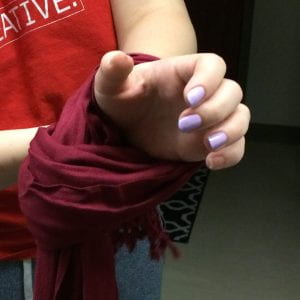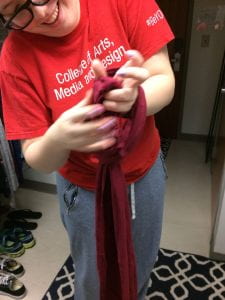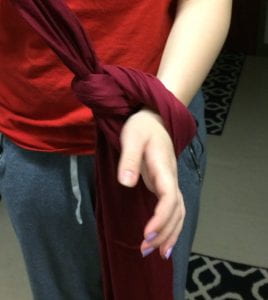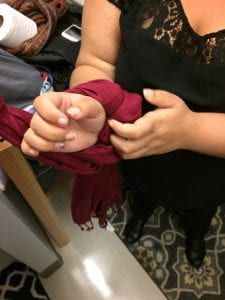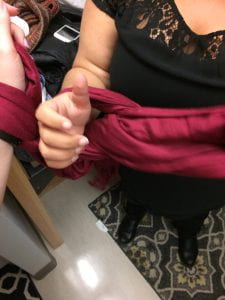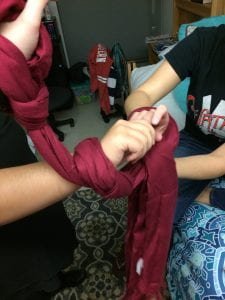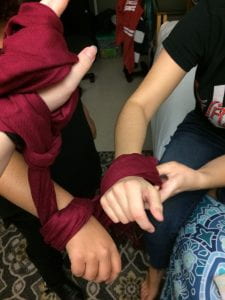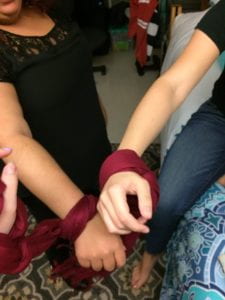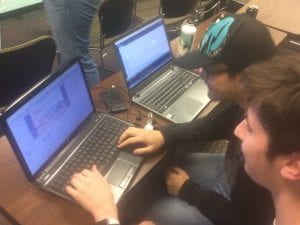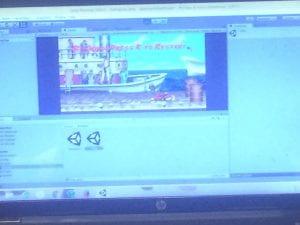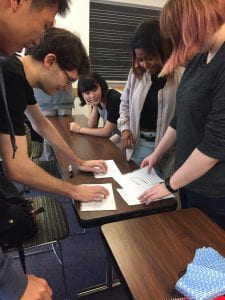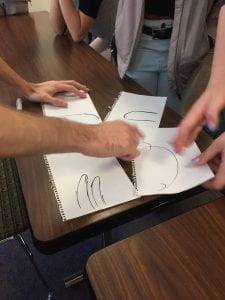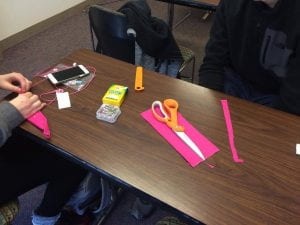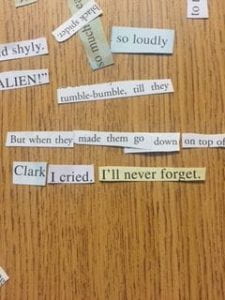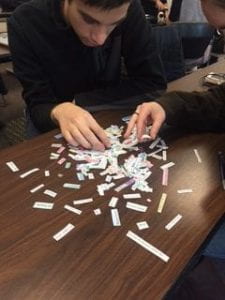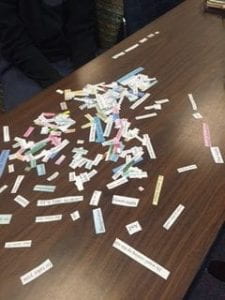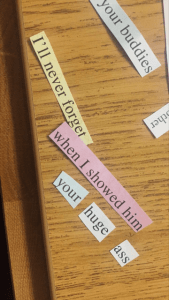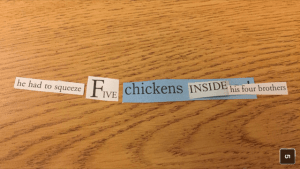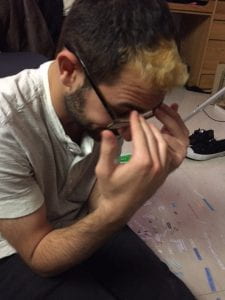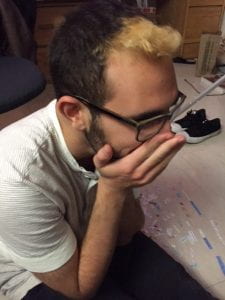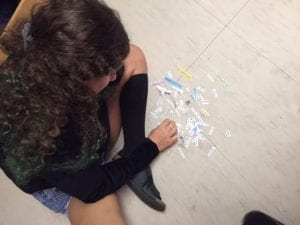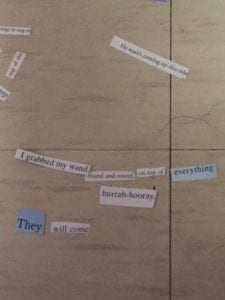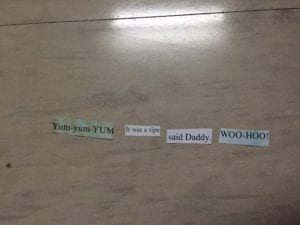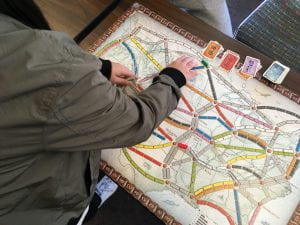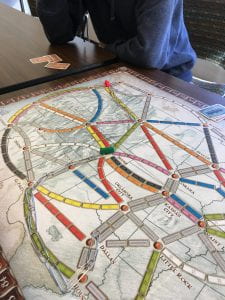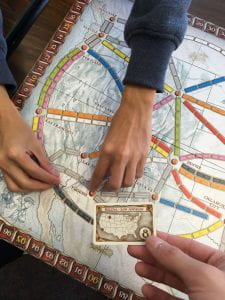Instructions:
To be done with two (or more) players.
Preferably to be done on a digital canvas such as Google Drive, so that players may use their own saved files. May also be done on a single digital device.
Select a concept.
Go around until every person has placed a found image that strikes them as relevant upon the canvas. They may overlap, arrange, and rearrange the images as they wish, so long as it is their turn.
Go around again until every person has placed a found phrase that strikes them as relevant upon the canvas.
Alternate until you feel the canvas is complete.
Play-throughs:
(Warning for gory, bloody stuff in the first image!)
I wanted to try out the game with more than one person, so during the class period, I tested it out again. This time we settled on the concept “horror” in celebration of the current month. I started off with a cute little ghost, but very quickly things escalated, which was actually surprisingly fun. The end result is a little horrifying, but that was the whole point, in the end.
 (recent playthrough)
(recent playthrough)
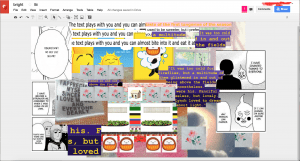 (original playtest)
(original playtest)
Artist’s Statement:
While the style I wanted for this piece did not quite match up with the underlying messages and concepts behind Dada, I loved the aesthetic of it. Especially the collages of images and words removed from their context, such as Raoul Hausmann’s “ABCD”/”Portrait de ‘artiste” or Hans Arp’s “Untitled (Abstract Composition)” or others. These collage pieces just seemed like they would be so fun to make. And so, I made that one of the bases of my piece: to actually go through that process of creating a collage.
As might be obvious from my last piece, I am really interested in exploring interactions between different people in a creation process. I also love seeing how different people perceive what should be the “same” concept or idea. And so, I thought, why not have people work on a themed collage together? At first, I wanted it to be entirely physical – I wanted to be able to cut out images and phrases from magazines and books. However, there would have been some level of difficulty in staying consistent with the theme and might have limited people’s visions. (Besides, I have rarely been able to actually go through with cutting up a book.) But then I remembered – it’s 2016. We’ve got the internet, and boy howdy does it have a lot of stuff!
So, I came up with a piece that asks for the participants to use any image or words that they did not come up with specifically for this piece to illustrate some concept. Using the internet (and sometimes weird screenshots from a long time ago, or words from a short story you had almost forgotten about, or even screenshots of a salient portion of the current canvas) would result in what I hoped would be a very varied, fun experience.
I think it is in this back and forth growth and interaction that I also incorporate some ideas from Fluxus. Art is experience and life, and life is constantly changing. With this piece, the participants are constantly giving and receiving a stream of information from the other player(s). Just like regular communication, you give your own interpretation of a subject and wait to interpret someone else’s. People also feed off of each other’s innovations. For example, when I took a screenshot of a word in the “horror” piece, on Ilayda’s next turn, she did too. Incorporating transparency into the images used was also a fun twist that made for a really interesting final result. I like how fluid this process inherently is – how far from static it has the potential to be.
I really like intimacy in creation, but for this piece, the intimacy depends on the number of participants involved. The more people there are, the less individual connection you get with them, of course. But, either way, I want it to be a fun – or interesting, at least – experience!

